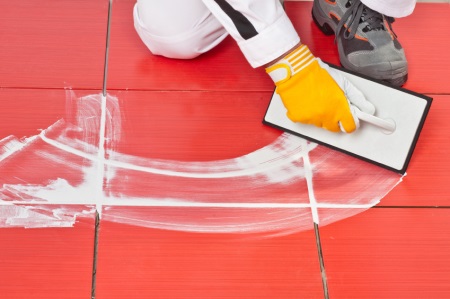Epoxy grout for tiles
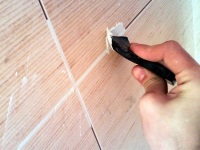
Traditionally, cement-based grout paste is used for grouting inter-tile joints. Relatively recently, an alternative to conventional grout has appeared - a grout mixture based on epoxy resins. Such grout is called two-component, because to make it, you need to mix the two main components - the epoxy itself and the hardener.
The attitude to epoxy grout among masters-finishers is ambiguous. Some consider its use an unreasonable waste of money, while others note a lot of advantages of this new material. In today's article, we will tell in detail about epoxy grout for tiles, analyze its advantages and disadvantages, as well as give detailed instructions on its use.
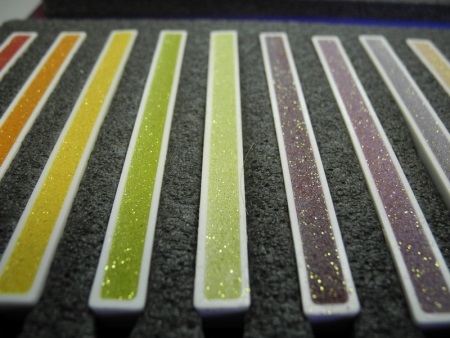
Pros
- Epoxy grout has excellent performance characteristics: it is absolutely impermeable to water, does not absorb dirt, does not lose color and does not react with chemicals contained in cleaning agents.
- While it is recommended to renew ordinary grout every few years, with epoxy grout you can forget about this problem. The service life of this material is about 50 years.
- Epoxy grout can be used not only in apartments. Its good abrasion resistance makes it possible to use it in rooms where aggressive cleaning agents are actively used, such as industrial plants, car washes or public swimming pools.
- Epoxy resin grout is characterized by excellent binding properties, so it can successfully replace tile adhesive. Specialists use this quality of grout when laying mosaic or glass tile panels - so the seams are almost invisible.
- Epoxy grout, hardening, becomes similar to plastic - just as hard and durable. Therefore, it is resistant to abrasion and mechanical damage. In addition, inter-tile joints filled with resin-based grout can be cleaned even with the toughest brush, without fear of damaging the coating.
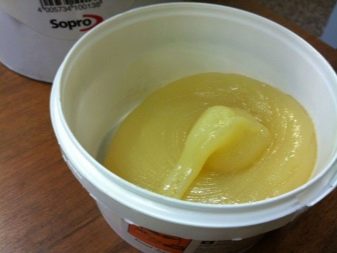
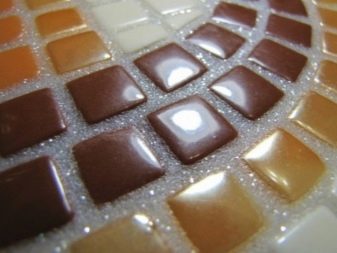
Cons
- We've already mentioned that epoxy grout is much more expensive than regular grout.
- To grout seams well and not leave marks, you will need to buy special tools and accessories for working with this material.When choosing epoxy grout for grouting interstitials, be prepared for this expense.
- Epoxy grout sets very quickly, so working with it requires certain skills. Inexperienced craftsmen get thick and sloppy joints. To practice, start working on an inconspicuous area of the wall or floor.
- A significant disadvantage of epoxy grout is considered by many to be unpleasant to the touch structure of the cured mixture. Most manufacturers' epoxy grout is grainy, so as it sets, it becomes like sandpaper.
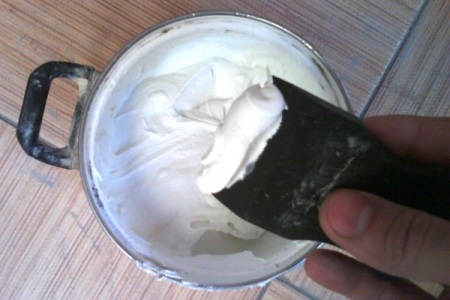
Is it easy for a beginner to cope?
As mentioned above, epoxy grout is not the most appropriate material if you are doing grouting joints for the first time. It is better to practice working with an ordinary grout mixture, and only then start mastering a new building material.
The difficulty with epoxy grout is that it sets very quickly. And if the novice master will zazetsya, then to adjust the joint or wipe off the grouting mixture from the tile will be impossible.
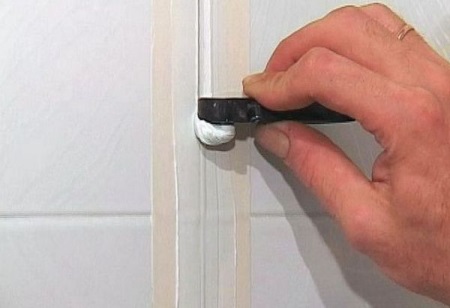
There are two basic rules for handling epoxy grout, which a beginner should know about:
- It is necessary to prepare the grout in small portions, otherwise it quickly sets and becomes unsuitable for work.
- It is necessary to remove excess grout from the tile in time (or better yet, entrust this work to an assistant), otherwise, you will have to buy a special cleaner.
Instructions for use
Work on the sealing of inter-tile joints with epoxy grout mixture takes place in three stages.
Preparation of the mixture
The epoxy grout package contains two bags of mixing ingredients. One package contains the epoxy resin and coloring agents, and the other package contains the hardener. When mixing, it is especially important to carefully observe the proportions. There is an important point here: if you mix everything at once, the resulting mass will solidify much faster than you finish the job. Therefore, the mixture should be prepared in portions. Calculate the proportions based on the instructions to the grout, since different manufacturers have different content of components in both bags and recommendations for mixing.

Caulking
At this stage, you will need a rubber spatula, which is applied to ordinary, cement grout and a special sponge for removing epoxy grout (an ordinary sponge will not work, as foam rubber quickly rubs off and becomes unusable). The surface to which the grout is applied must be absolutely dry. The grout should be applied in small portions, gently smooth out with a trowel and immediately remove the remains of the mixture from the tiles with a wet sponge. To make the joint as even as possible, after about an hour it is recommended to wet it a little and touch it up with your finger.
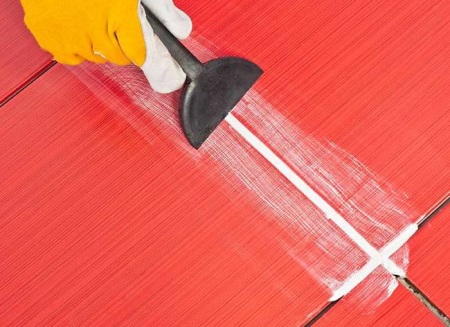
Cleaning ceramic tiles
Even if you cleaned the tile well after each portion of grout, by the end of the work on the tiles is still formed a deposit. You can remove it with special cleaners that can cope with traces of epoxy (so it is better to buy them immediately, along with the grout).
You can clean the tile from the plaque only the next day, otherwise you can damage the joint.
To do this, you will need a special, "shaggy" cloth, which should also be purchased at the same time as the epoxy grout. After you wash the tiles, it will remain a thin layer of the substance that is part of the grout. It is almost impossible to see it, but you can feel it to the touch. You can't get rid of it right away, but it will wash off over time.
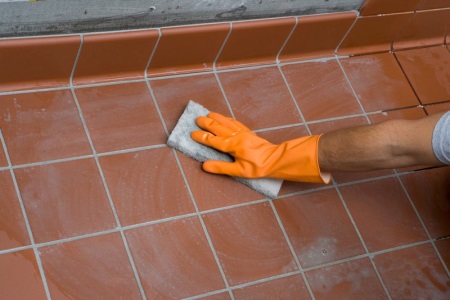
Common Mistakes
- Some people prepare the grout mixture "by eye", ignoring the proportions prescribed in the instructions. By doing so, you can only ruin it.
- To leave the remnants of epoxy grout on the tiles, hoping to remove them at the end of the work, it is also wrong. During this time, the composition will harden and scrub it, without damaging the tile, it will be very difficult.
- Quite often beginners work with epoxy grout, using the same tools as for cement grout. This, of course, saves them money, but the result of the work does not justify this savings. The specifics of the material special use of other tools and accessories.
